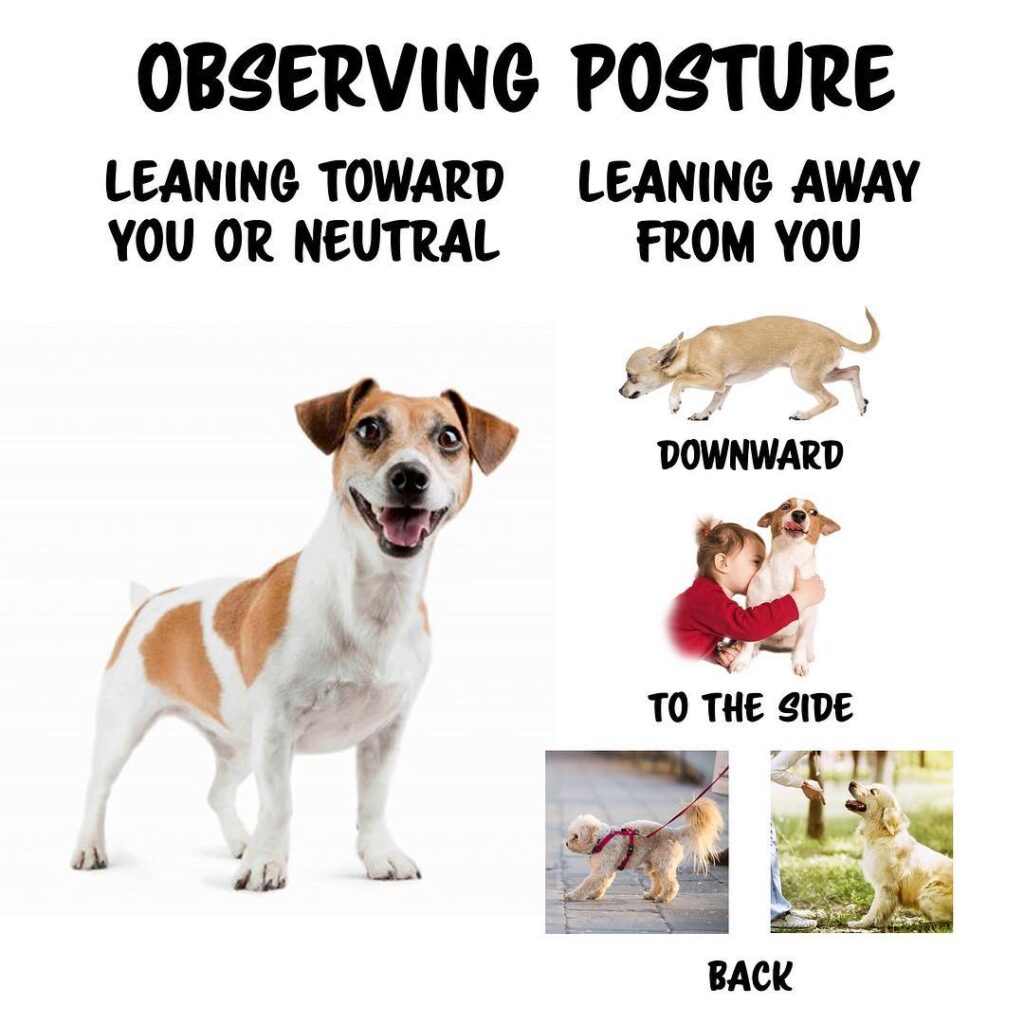Dogs can't tell us when they're in pain, but they do communicate their discomfort through their body language. Learn the "body language of a dog in pain"
By understanding the Body language of a dog in pain , we can be better pet parents and get them the help they need. Here are some key signs to watch for:
Facial Expressions:
- Grimace: A strained, tense facial expression with narrowed eyes and flattened ears.
- Vacant stare: A look of being lost in thought or disengaged from their surroundings.
- Wide-eyed: Excessively open eyes, often accompanied by panting.

Posture and Movement:
- Hunched back: Walking with a lowered head and spine, making them appear smaller.
- Stiff gait: Limping, favoring one leg, or moving slowly and cautiously.
- Reluctance to move: Hesitating to jump on furniture, climb stairs, or go for walks.
- Abnormal postures.A painful dog may stand with his front legs back under his chest in order to take some of the weight away from painful hips or rear legs. You may notice that once he sits, his rear legs splay off to the left or right, rather than being tucked underneath as is normal. When standing up he may seem to pull himself up by his front legs, rather than pushing himself up with his rear legs. He may also prefer to sit rather than to stand, and to lie down rather than to sit when stopping along the way during a walk.
Any or all of these changes may indicate pain and should be brought to the attention of your veterinarian. It is now understood that the sooner the body language of a dog in pain is recognized and managed, your dog’s quality of life will be maintained, as well as your dog’s (and your family’s) daily living activities.

Tail and Ears: Body language of a dog in pain
- Tucked tail: A low tail tucked between the legs, often a sign of submission or fear.
- Flattened ears: Ears held back against the head, sometimes accompanied by whimpering or whining.
- Excessive licking: Obsessively licking at a specific area of their body, indicating pain or irritation.

Vocalizations:
- Whining: A high-pitched, mournful cry often associated with pain or anxiety.
- Moaning: A low, drawn-out vocalization that can indicate discomfort or distress.
- Growling: Snapping or snarling, especially when touched in a painful area, this is very common body language of a dog in pain.

Changes in Behavior:
- Hiding: Seeking seclusion and avoiding interaction, even with loved ones.
- Loss of appetite: Refusing food or treats, even their favorite ones.
- Irritability: Snapping or growling at people or other animals, even without provocation.
- Unusual vocalizations: Excessive barking, howling, or whining for no apparent reason.
- Uncharacteristic aggression. Painful dogs who have previously been very friendly and gentle may begin to act completely out of character. He may growl when people or other pets in the household approach him, and he may lash out if handled. He may resent being brushed or combed and may appear to have a very defensive posture when simply lounging around the house, watching carefully what is happening around him in order to avoid painful encounters.

Attention :
- Body language of a dog in pain may give various signs ,These signs can also indicate other issues like fear, stress, or anxiety.
- If you notice any of these changes in your dog, especially in combination, it’s best to consult a veterinarian.
- Early detection and treatment of pain can improve your dog’s quality of life and prevent further complications.

How can pain management help?
Whether it’s related to an acute injury or a more chronic one, there are several approaches to pain management in dogs. Where possible, the direct cause of the pain will be addressed; however, if this is not an option, the pain management approach taken will depend on the following:
- The type of pain
- How long it has been present (chronicity)
- Any other health issues your dog may have
If we understand the body language of a dog in pain then by adopting few simple changes can help ease discomfort in a long-standing painful condition, such as pacing levels of activity, or making minor changes to the home environment.

By paying attention to the body language of a dog in pain , you can become their voice and advocate for their well-being. So next time your furry friend seems a little off, take a moment to observe their body language. It might just tell you everything you need to know.
Share this content:

